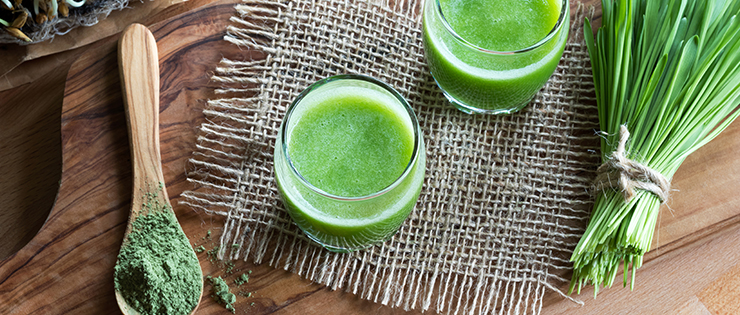
What is Chlorophyll?
Plants need sunlight for that exceedingly hard word to pronounce, photosynthesis. Plants have an amazing superpower as they are self-feeding, meaning they create their own food for their energy source to grow. However, they can’t do this without a molecule called chlorophyll which absorbs the sunlight and converts it to nutrients for the plant. So, this is why all plants need some sort of light to stay alive and you will find low light plants will have a low amount of chlorophyll. You will be able to tell chlorophyll-rich plants as they will be bright green due to their pigment that absorbs the sunlight. If we choose to consume chlorophyll-rich foods in our diet, we can also reap the rewards.
What are the benefits?
Deodoriser
Most popularly known and used as a natural detoxifier and deodoriser. You see foods change the pH of our body, so when this happens the body can emit certain odours and often not pleasant ones. If you have ever tried the ‘keto diet’ eating trend then you may have experienced ‘keto breath’ cause by a type of ketone called acetone. Recognise the smell? Acetone is found and nail polish, so not surprisingly it has an aroma quite similar. Chlorophyll helps to neutralise the toxins acting as a natural deodorant.
Healthier Blood
Due to the chemistry of chlorophyll appearing very similar to red blood cells it may help to purify and improve the quality of your blood meaning it could be beneficial to sufferers of anaemia, strengthening the heart, regenerating tissue and improve cholesterol levels.
Anti-ageing
Antioxidants. It also has vitamins, antioxidants, and therapeutic properties that may benefit your body.
Skin Conditions
Regenerating tissue.
How do I get it?
You can add chlorophyll to your own diet by either plants or supplements. Like most good nutrition the best source of chlorophyll will always come from natural sources like green vegetables and herbs. A simple tip is to look out for green vegetables that are green the whole way through meaning the chance of a solid chlorophyll hit and not white inside. You can reap the rewards of including chlorophyll naturally in your diet by making sure you include some of the best chlorophyll food sources which include: wheatgrass, spinach, kale, rocket, broccoli, collard greens, green beans, peas, asparagus, alfalfa and parsley. Just remember the darker green the leaves are the better for you and try not to overcook them as to better retain the nutritional profile.
You can also supplement, which is advantageous as well absorbed by the body. In supplementation, the chlorophyll is actually chlorophyllin and can come in the form of liquid chlorophyll, powder chlorophyll that can be added to smoothies or juices, spirulina, chlorella and matcha green tea.
Always check with your regular health professional before taking a new supplement.